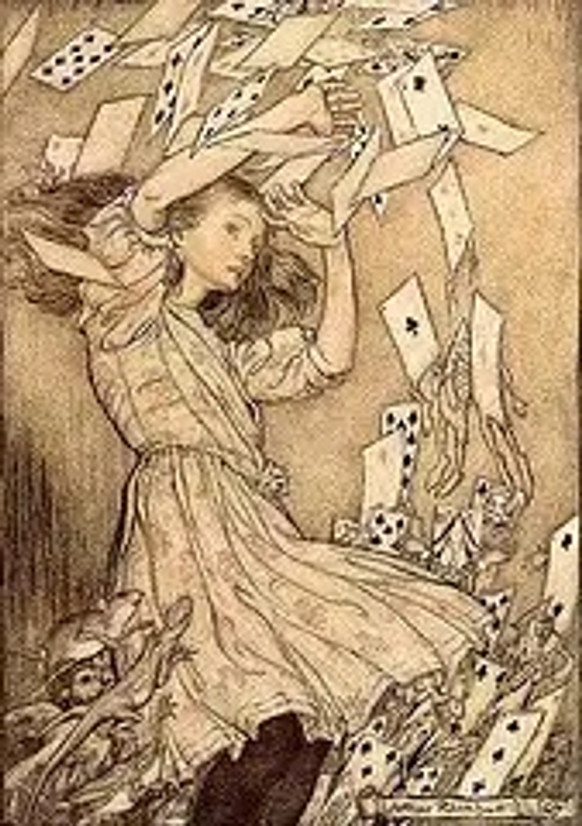Why Alice in Wonderland Is Not In Any Way A Children's Book
First published in 1865, Lewis Carroll’s Alice in Wonderland was an immediate success and has remained one of the best-known English children’s books. However, although popular with both children and adults because of its whimsical characters with their unique personalities, Alice in Wonderland is not in any way a children’s book. Alice’s world is a cruel and dangerous place. Beneath the surface we find political commentary, mathematical symbolism, and dysfunctional personalities. How intentional Carroll was in creating this dark landscape and whether he intended it as a children’s book or much more we may never know.
Background

The book was written during the Victorian era, a period of severe propriety and excess emphasis on morality. Carroll was a shy introvert, who felt isolated, and was interested in both mathematics and science – interests apparent in the book.
Characters
The creatures of Wonderland are strange and often bizarre with many arbitrary customs. Although their behavior is defensible with strange logic, their customs are silly and often cruel. The characters have Victorian personalities; they are opinionated and have strong ideas about what constitutes “appropriate” behavior.
Symbolic Language
Alice in Wonderland contains mathematical, linguistic, societal, and political references and symbolism.
Mathematical
Carroll was a mathematician at Christ Church and many scholars suggest that Alice in Wonderland is a satire on the modern mathematics that was beginning in the mid-19th century. There are many references and mathematical concepts. For example, in Chapter 1, in the midst of shrinking, Alice ponders about what size she will finally become - perhaps she will be "going out altogether, like a candle" – pondering that reflects the concept of a limit.
Linguistic
Most young ladies of the Victorian era took French lessons and Carroll includes this in his book. For example, in Chapter 2, Alice speaks to the mouse, which she assumes may be French, the first sentence in her lesson book, "Où est ma chatte?" ("Where is my cat?")
Societal
The Walrus and the Carpenter portray the struggle between the working class and those of the higher class, as well as the inequality between the two classes. Carroll’s book both criticizes of Victorian capitalism and mocks Victorian racism.
Political
In Chapter 8, there is an allusion to the Wars of the Roses. Three cards are painting the roses on a white rose tree red, after they accidentally planted it, one the Queen of Hearts hates. Red roses symbolize the English House of Lancaster and white roses their rival House of York.
Alice and Her World
Alice in Wonderland definitely has a dark side. Carroll sees childhood as a dangerous place, shadowed by the threat of death. The Queen of Hearts ritually demands everyone’s head, especially Alice’s – “Off with her head!”
The adults in Wonderland are powerful, but often absurd. Even the characters that help Alice have a dark edge. Alice’s is traumatized by the characters and the environment, (The Mad Hatter and the Mad Tea Party for instance.) and she cries when it is impossible to understand the confusing rules of Wonderland. She states that, “Everything is so out-of-the-way down here."
Alice is challenged to grow into a strong and compassionate person despite the creatures she meets in this dark and sinister world. She must learn the rules of each encounter, retaining a sense of justice, and learning who she is and how to react in a way that will free her from Wonderland and return her to normal life.
Conclusion
Although Alice in Wonderland will continue to be read to children, it is not really a children’s book. Movies based upon it have attempted to portray it as such, accept perhaps Tim Burton’s version, whose adaptation comes closest to capturing Carroll’s dark world, a world that can fill a child with fear and create more questions than answers.
Recent Posts
-
How to Maximise Space with High Sleeper Beds in Small Rooms
When it comes to making the most of limited space in small bedrooms or shared living arrangements,&n
-
A Guide to High Sleeper Bed Safety
High sleeper beds are a fantastic way to maximise space in your child’s bedroom, offering area








